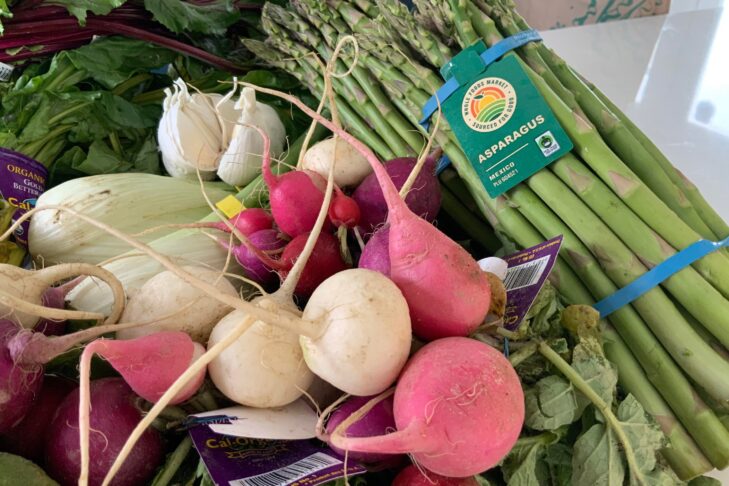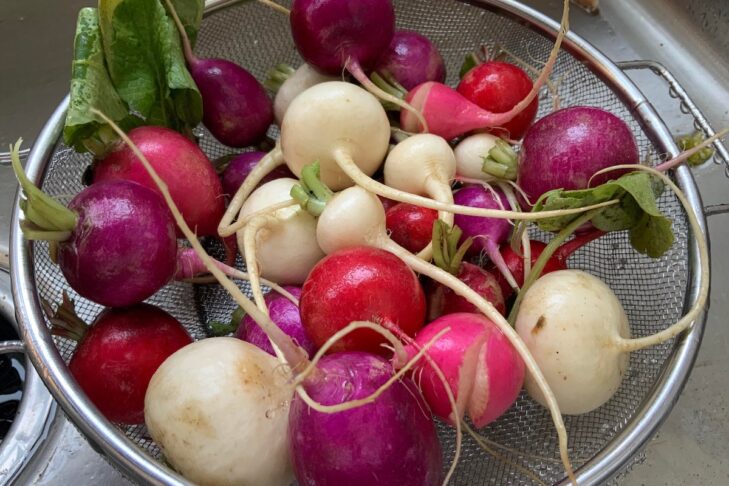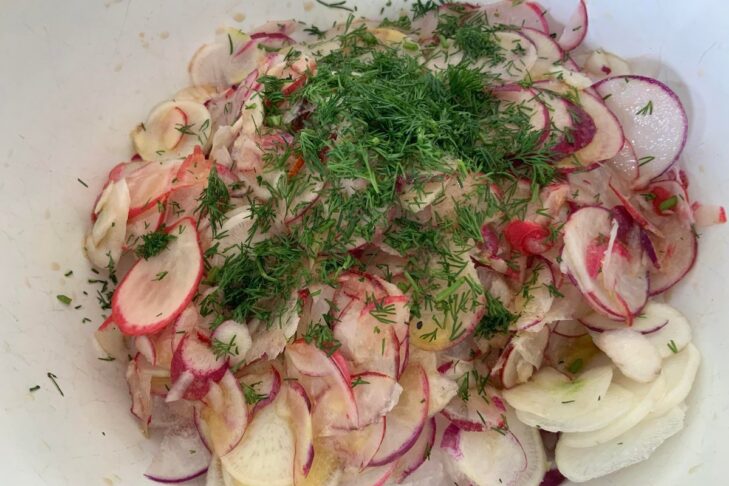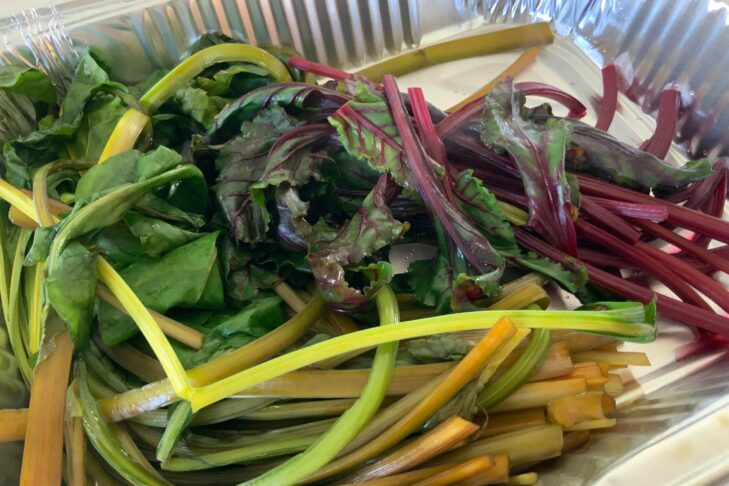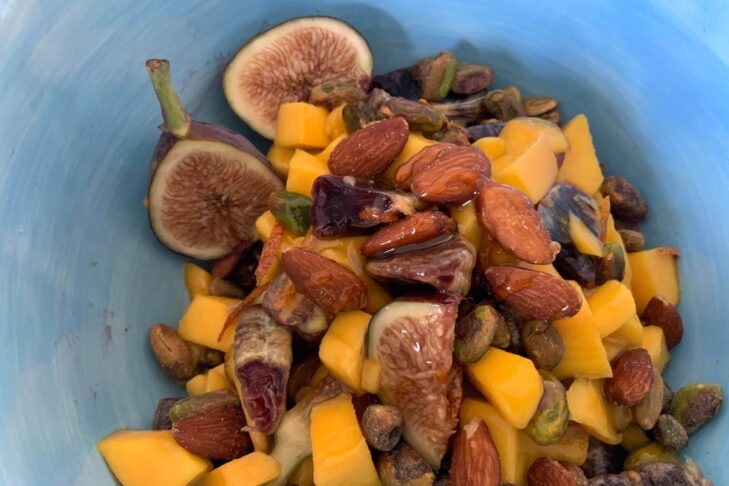As a child, it was always my job to make the seder plate, a job I took seriously. I would lay out each food represented at the seder. That food gets overlooked; while it’s the star of the Haggadah, often no one eats it. I have learned so much these past few years and thought it would be fun to make the seder plate shine. It was important for me to use food that’s not too expensive and to make sure there would be no waste; that meant when I cut the beet greens to roast the beets, I had greens to create a warm salad with it.
Here’s my take on a modern seder plate:
- Mango, fig and pistachio charoset (recipe below)
- Roasted hard-cooked eggs with Himalayan pink salt and dried olives
- Rainbow radishes sliced and tossed with olive oil, sherry vinegar, dill and salt
- Roasted red and yellow beets
- Warm beet green salad with olive oil, salt and pepper
- Roasted fresh fennel and grilled artichoke hearts
- Fresh green asparagus and hearts of palm
- Green olives
- Baby yellow tomatoes
Serving the charoset with my blood orange and harissa roasted salmon makes it modern with traditional roots.

Mango, Fig and Pistachio Charoset
Yields 4 cups
Ingredients
- 2 Atulfo mangoes, peeled and diced
- 1 blood orange, cut into pieces, plus its zest
- ½ cup salted, peeled pistachios
- ½ cup roasted, salted almonds
- 6 fresh figs, sliced into small wedges
- 1 teaspoon ground cardamom
- ½ cup high-quality honey
Directions
- Place everything in a mixing bowl and gently stir to combine. Refrigerate two hours before serving.



